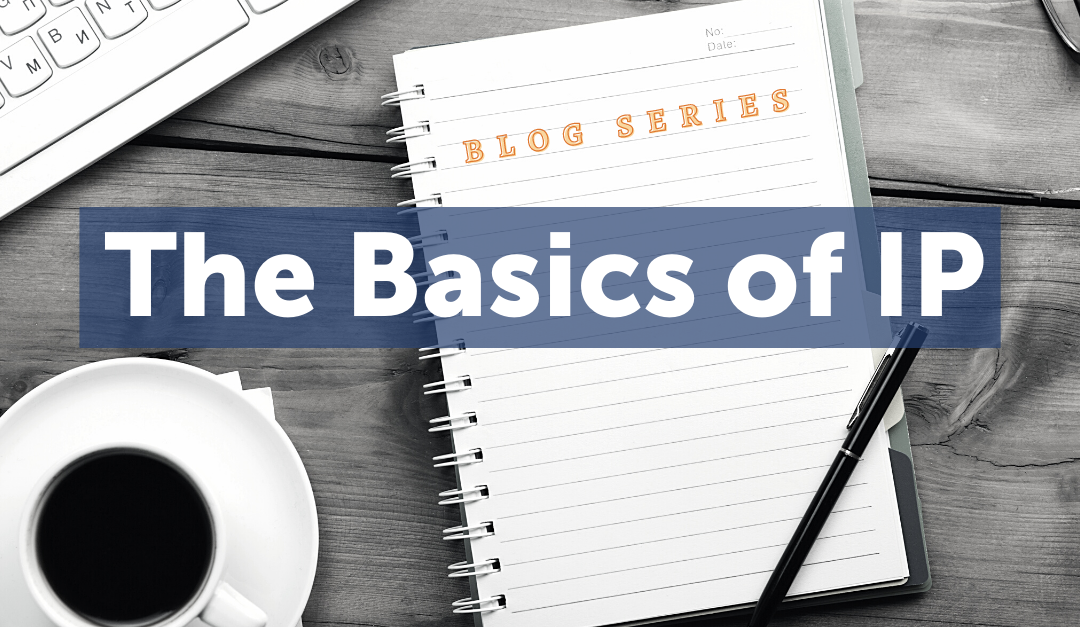This is Part 4 of our ‘Basics of IP’ blog series. You can find Part 1, Part 2, and Part 3 here. The following has been adapted from “Can I Trademark That?”, a Michelson IP animated short.
Say you’ve got a great idea for a business and you’d like to trademark it. The first thing you need to know is that you can’t trademark a mere business idea. Trademarks are only granted to companies actually engaged in business.
What exactly is a trademark?
A trademark is a word, name, symbol, or device — or combination of those — that identifies the source of a product or service. These words or symbols can also include slogans, letters, numbers or even sounds — so long as they clearly identify the source of a product or service and distinguish it from all others.
Trademarks protect the public by preventing confusion, or deception by those who try to “palm off” their goods as those of another. Trademarks also protect the reputation of the producers of those goods and services, and can be very valuable in marketing and advertising.
Take Nike’s “Swoosh” logo. In 1971, Nike founder Phil Knight paid graphic design student Carolyn Davidson a mere $35 to design the “Swoosh” logo for his new company. Today consumers associate Nike’s brand and reputation with that trademarked logo, and it’s worth a staggering $26 billion. Don’t feel too bad for Ms. Davidson, though. Phil Knight later gave her stock worth an estimated three-quarters of a million dollars.
Types of trademarks
There are two main types of registered marks: trademarks and service marks.
Trademarks identify products: physical goods and commodities that are manufactured, produced, or grown. An example of this would be Rihanna’s Fenty Beauty line of cosmetics.
Service marks are similar to trademarks, except that they identify the source of a service. An example of this would be the “NBC Chimes” sound that plays on the channel due to the television station providing a public service.
The key requirement for getting a trademark is distinctiveness. How that trademark distinctively identifies the producer of a product or service can vary. The words, names, symbols, or devices that make up the trademark can be fanciful, arbitrary, or suggestive. However, they can rarely be descriptive, and absolutely never be generic.
So how did Toys R Us, for example, get away with using the generic word “toy” in its trademarked name? It’s because of the fanciful spelling, which distinguishes it from other toy stores.
A trademark can become so successful that the public begins to associate it with an entire category of similar products and services. That’s what happened to “Cellophane” and “Aspirin”. When they became generic names, they lost their trademarks.
That’s why some companies go to great lengths to ensure that people don’t use their trademarked names generically. Google, for example, asks people to follow its “Rules for Proper Usage” and say “I used Google search” rather than “I googled it.”
How do you establish trademark protection?
Like copyrights, trademarks don’t have to be registered with the federal government. They still give their owners the exclusive right to use the mark in their geographic area of business, the right to bring civil action against infringers, and protection against false advertising.
Unregistered trademarks are identified by the “TM” symbol displayed on the product, package, or the advertising that promotes it.
However, registering your trademark with the U.S. Patent and Trademark Office gives you some important additional protections, like:
- The exclusive right to use the trademark nationwide.
- The ability to bring legal action in federal court to defend your trademark.
- The ability to record the registered mark with the U.S. Customs and Border Protection Service to prevent importation of infringing foreign goods.
The ® symbol identifies registered trademarks.
It costs money to register a trademark: typically $275 in filing fees, plus the cost of an attorney to help you, which can be as low as $200 or as high as $7,000. That’s why many small businesses choose to rely just on the common law protections given to unregistered trademarks when they’re first starting up.
Registered or not, trademarks can have real value. If you’ve got a great product or service, branding it with a distinctive trademark can mean the difference between profit or loss. Just ask Phil Knight.
Free Infographic
—
Continue on to Part 5 and Part 6 of this blog series. For more in-depth information on trademarks, check out the free online course Intellectual Property: Inventors, Entrepreneurs, Creators.
_________


This Blog is very informative.
Also, if there are small businesses that don’t plan to expand regionally or nationally, there’s little reason to register your trademark. If you add the TM to your business name, you’re protected by law, and unless a competitor starts to use the same name, you typically won’t have a problem. However, if you do business online throughout the states or overseas, a trademark is worth the effort. This is especially true if you find international businesses in the same industry.